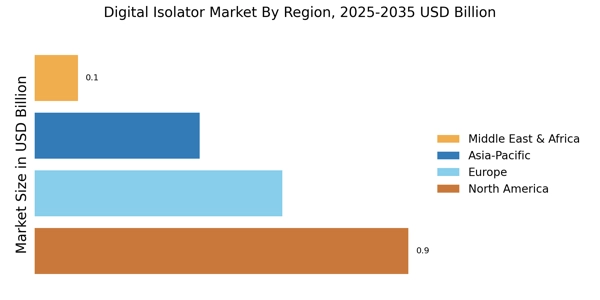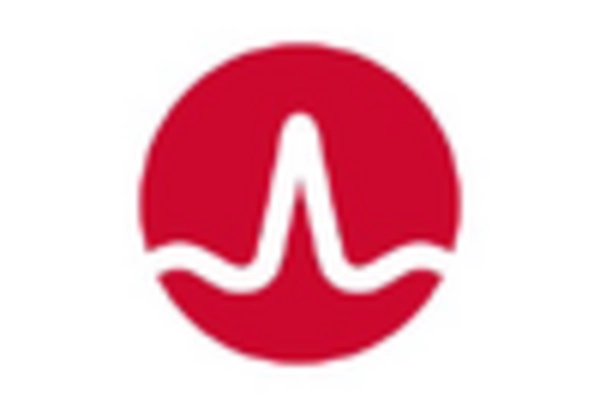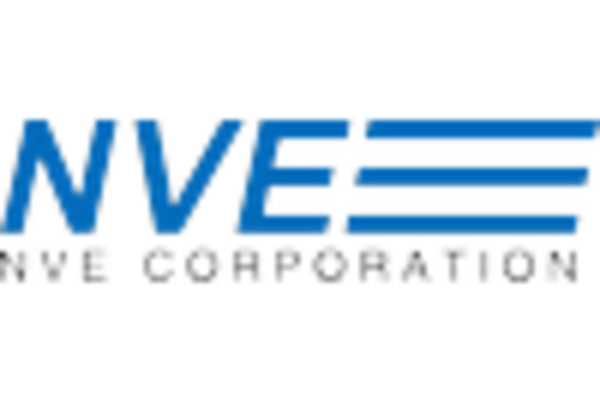Growing Focus on Safety Standards
The Digital Isolator Market is increasingly shaped by the growing focus on safety standards across various sectors. Regulatory bodies are implementing stringent safety regulations to protect both equipment and personnel from electrical hazards. Digital isolators are essential in meeting these safety requirements, as they provide electrical isolation that prevents dangerous voltage levels from affecting sensitive components. Industries such as automotive and healthcare are particularly affected by these regulations, leading to a heightened demand for reliable isolation solutions. The market for safety-compliant electronic components is expected to grow, with projections indicating a rise in demand for digital isolators that adhere to these standards. This trend underscores the importance of safety in the Digital Isolator Market, driving manufacturers to innovate and enhance their product offerings.
Rising Demand for Energy Efficiency
The Digital Isolator Market is experiencing a notable increase in demand for energy-efficient solutions. As industries strive to reduce operational costs and minimize environmental impact, digital isolators are becoming essential components in various applications. These devices facilitate energy savings by ensuring minimal power loss during signal transmission. According to recent data, the market for energy-efficient electronic components is projected to grow at a compound annual growth rate of approximately 8% over the next five years. This trend indicates a strong preference for technologies that not only enhance performance but also contribute to sustainability goals. Consequently, manufacturers in the Digital Isolator Market are focusing on developing products that meet these energy efficiency standards, thereby driving market growth.
Expansion of Renewable Energy Sources
The Digital Isolator Market is also being propelled by the expansion of renewable energy sources. As the world shifts towards sustainable energy solutions, the integration of solar, wind, and other renewable technologies necessitates the use of advanced electronic components, including digital isolators. These devices are critical in managing the electrical isolation required in renewable energy systems, ensuring safe and efficient operation. The renewable energy sector is projected to grow significantly, with investments expected to reach over 1 trillion dollars by 2030. This growth creates a substantial opportunity for the Digital Isolator Market, as manufacturers develop isolators tailored for renewable applications, thereby enhancing their market presence and driving innovation.
Increasing Adoption of Automation in Industries
The Digital Isolator Market is significantly influenced by the increasing adoption of automation across various sectors. Industries such as manufacturing, automotive, and healthcare are integrating automated systems to enhance productivity and operational efficiency. Digital isolators play a crucial role in these automated systems by providing reliable signal isolation, which is essential for protecting sensitive components from high voltages and noise. The automation market is expected to witness substantial growth, with estimates suggesting a market size exceeding 200 billion dollars by 2026. This growth in automation directly correlates with the demand for digital isolators, as they are integral to ensuring the safety and reliability of automated processes. Thus, the Digital Isolator Market is poised to benefit from this trend as more industries embrace automation.
Technological Innovations in Semiconductor Devices
The Digital Isolator Market is witnessing a wave of technological innovations in semiconductor devices. Advances in semiconductor technology are enabling the development of more efficient and compact digital isolators, which are crucial for modern electronic applications. Innovations such as improved materials and manufacturing processes are enhancing the performance and reliability of these devices. The semiconductor market is anticipated to grow significantly, with estimates suggesting a market size of over 600 billion dollars by 2025. This growth is likely to benefit the Digital Isolator Market, as manufacturers leverage new technologies to create isolators that meet the evolving demands of various applications. As a result, the industry is expected to see increased competition and a push towards higher performance standards.
















Leave a Comment